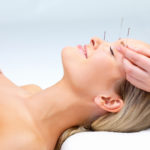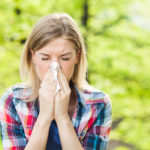Asthma

What is asthma?
Asthma is an episodic constriction of the bronchial tubes. It is a common disorder of both children and adults, often regarded as mysterious and frustrating to treat.
What are some asthma symptoms?
Asthma symptoms can include wheezing (especially on expiration), coughing, and difficulty in breathing. Asthma can appear and disappear without warning. If an attack is severe enough, it can kill.
What are the causes of asthma?
The immediate cause of an asthmatic attack is tightening of the muscular bands that regulate the size of the bronchial tubes. These muscles are controlled by nerves, but what triggers the nerves to make airways constrict inappropriately is not clear. The triggers for asthma can be primarily allergic or primarily emotional or induced by exercise or respiratory infection, or it can occur with no obvious causes. It is now being considered an inflammatory disorder.
The “hygiene hypothesis” is a proposed explanation for why allergies and asthma are now epidemic, especially in developed countries. The hypothesis holds that children who grow up in crowded and dirtier environments are less likely to develop these ailments than youngsters raised in cleaner, more protected environments. The idea is that the developing immune systems of less privileged kids are exposed to lots of germs from an early age and so become stronger and more protective of health. The hypothesis recently got a big boost in credibility. Researchers at Duke University Medical Center compared the antibodies in the blood of laboratory rats and mice, which grow in a virtually germ-free environment, with those of wild rats and mice. All of the wild rodents had higher levels of IgG and IgE, classes of antibodies associated with immune and allergic diseases, but the wild rodents’ antibodies did not tend to bind to the rat’s own cells, as did the antibodies produced by the hygienically raised rodents. Instead, the wild rodents’ antibodies efficiently and effectively attacked invading organisms. The research was written up in the August, 2006, Scandinavian Journal of Immunology.
Despite this intriguing evidence, we need a lot more proof from human studies before the hygiene hypothesis makes the leap from theory to fact, and I wouldn’t worry about a home being “too clean.” In fact, random pollution of the home environment has its own drawbacks. Children who breathe secondhand smoke are more likely to develop asthma, and among all youngsters with asthma, those who breathe secondhand smoke have more frequent attacks).
What are the conventional asthma treatments?
Asthma treatment has two aspects: management of acute attacks and long-term control or prevention. Conventional treatments are sometimes the best choices for acute attacks, where immediate relief can be a life-and-death matter.
For allergic asthma, one of the safest and best drugs is inhaled cromolyn sodium. Most bronchodilating drugs are stimulants that increase sympathetic tone and anxiety. Theophylline, derived from tea, has a long history of use, but may not be as safe as doctors used to think. It can cause dramatic personality changes. Other drugs of this class can be inhaled to relieve and prevent attacks. These inhalers work, but they are often addictive, since the bronchial tubes are likely to become constricted again when one dose wears off (the same pattern occurs when these drugs are sprayed into the nose to relieve nasal congestion). Newer drugs – the leukotriene inhibitors are useful for some patients and less toxic.
Other inhalers contain steroids. If the steroids are not absorbed into the system, they can be safe and effective. Different products vary greatly in efficacy and absorbability. At this writing the best are Flovent (fluticasone) and Pulmocort (budesonide), both safer than older versions. Steroid inhalers should always be used immediately following inhalation of a bronchodilator.
In my view, conventional protocols for long-term control are more problematic. Oral steroids (prednisone is the commonest) are very dangerous for asthmatics, because it is too easy to become addicted to them, and toxicity from long-term steroid use is devastating. Try to avoid ever going on oral steroids. If you do have to take them, get off as soon as possible. In general, the less medication you can take, the better. Allopathic drugs, being suppressive in nature, tend to perpetuate asthma and may reduce the chance that it will disappear on its own.
What therapies for asthma does Dr. Weil recommend?
For acute attacks, this is one of the home remedies for asthma recommended by Dr. Weil: try lobelia, or Indian tobacco (Lobelia inflate). Mix three parts tincture of lobelia with one part tincture of capsicum (red pepper, cayenne pepper). Take twenty drops of the mixture in water at the start of an asthmatic attack. Repeat every thirty minutes for a total of three or four doses.
For long term control and prevention:
- Decrease protein to 10 percent of daily caloric intake. Replace animal protein as much as possible with plant protein
- Eliminate milk and milk products, substituting other calcium sources.
- Eat organically grown fruits and vegetables as much as possible.
- Eliminate polyunsaturated vegetable oils, margarine, vegetable shortening, all partially hydrogenated oils that might contain trans-fatty acids, all foods that might contain trans-fatty acids (such as deep-fried foods).
- Use extra-virgin olive oil as your main fat.
- Increase intake of omega-3 fatty acids.
- Always drink plenty of water to keep your respiratory tract secretions more fluid.
- Experiment with eliminating (one at a time) wheat, corn, soy and sugar for six to eight weeks to see if the condition improves.
- Eat ginger and turmeric regularly for their anti-inflammatory effects.
- Have some manipulative work done on the chest to break up restrictive patterns in nerves and muscles that develop in chronic asthma. The best systems I know for this are osteopathic manipulation, especially from a practitioner of cranial therapy, and Rolfing, a form of deep-tissue massage.
- Minimize contact with respiratory irritants, such as smoke, dust, molds, and volatile chemicals. Remove sources of offending materials from your home, install a good air filtration system, or consider moving if the air is generally bad where you live. Experiment with living in other locations: in high mountains, the desert, or near the seacoast. Asthma may improve greatly with a change of climate.
- In adults, GERD (acid reflux disease) may be an underlying cause of asthma. In such cases, successful treatment of the digestive problem will often clear up the asthma.
- Experiment with traditional Chinese medicine and Ayurvedic medicine (the traditional healing system of India). These systems are sometimes able to offer significant help through more specific dietary adjustments and herbal treatments.
Here are some specific recommendations for exercise-induced asthma:
- Warm up very slowly to the point where you almost feel the “tightness” associated with exercise-induced asthma. Then stop and stretch or, if you’re exercising vigorously, slow down. By taking this break, you often can block the development of asthmatic symptoms. You can then go back to your normal pace. This may take some getting used to, but can sometimes eliminate the need for medication.
- Try breath work. The most effective approaches are pranayama techniques (breath control exercises taught in some yoga classes). You can do these after the initial warm-up when symptoms are almost felt. For beginners, start with “The Relaxing Breath,” a technique I describe in my books and on this website.
- Find a form of physical activity that minimizes your exercise-induced symptoms. Sports or activities that have intermittent rest periods (such as tennis, softball, and golf) can allow you to regain control of your breathing. Swimming may be better than running outdoors in cold weather, but no type of exercise is off-limits with proper treatment. In fact, some of the world’s top athletes have exercise-induced asthma, and they’re still able to compete successfully in Olympic-level events.









